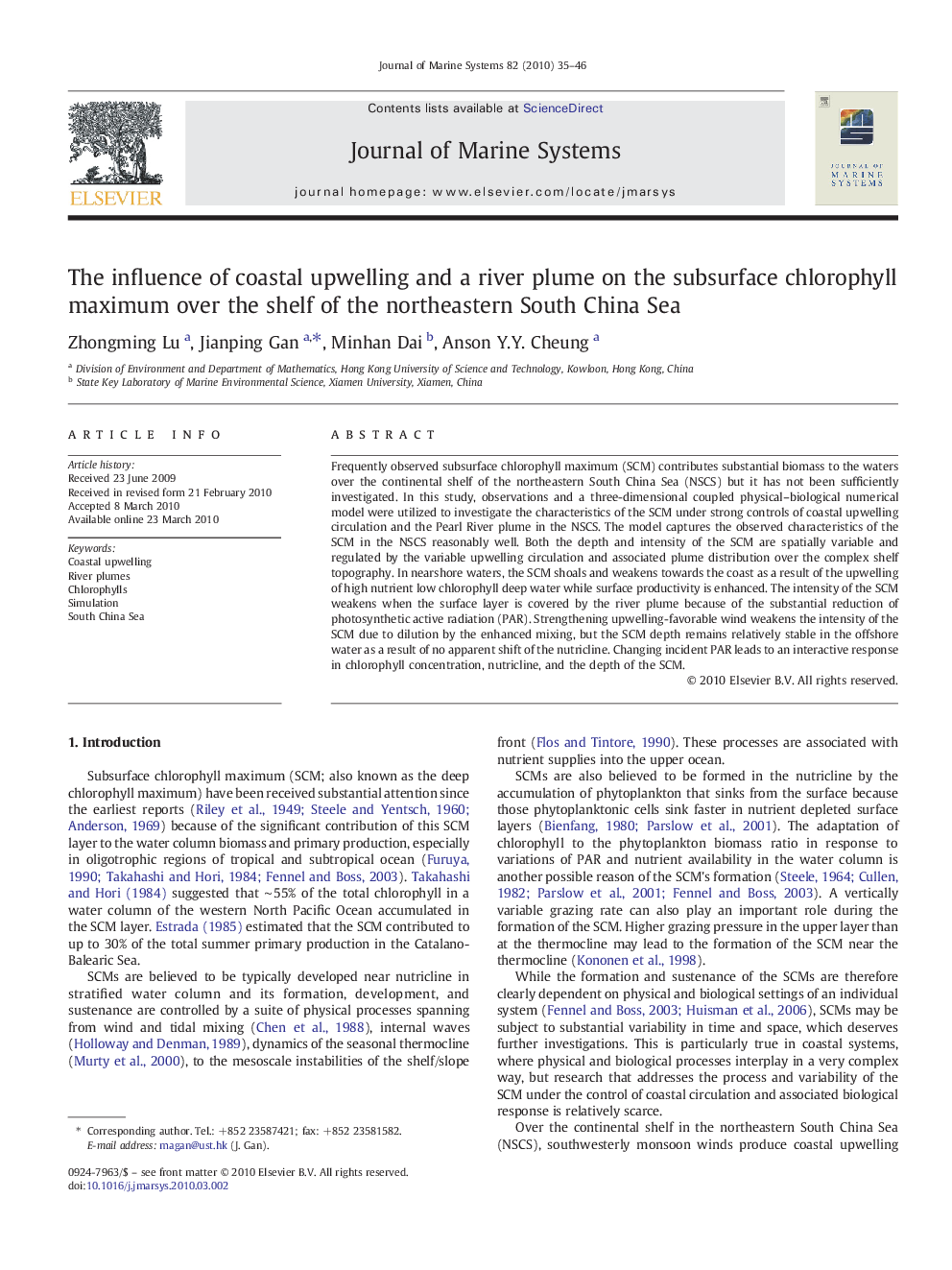| Article ID | Journal | Published Year | Pages | File Type |
|---|---|---|---|---|
| 4548491 | Journal of Marine Systems | 2010 | 12 Pages |
Frequently observed subsurface chlorophyll maximum (SCM) contributes substantial biomass to the waters over the continental shelf of the northeastern South China Sea (NSCS) but it has not been sufficiently investigated. In this study, observations and a three-dimensional coupled physical–biological numerical model were utilized to investigate the characteristics of the SCM under strong controls of coastal upwelling circulation and the Pearl River plume in the NSCS. The model captures the observed characteristics of the SCM in the NSCS reasonably well. Both the depth and intensity of the SCM are spatially variable and regulated by the variable upwelling circulation and associated plume distribution over the complex shelf topography. In nearshore waters, the SCM shoals and weakens towards the coast as a result of the upwelling of high nutrient low chlorophyll deep water while surface productivity is enhanced. The intensity of the SCM weakens when the surface layer is covered by the river plume because of the substantial reduction of photosynthetic active radiation (PAR). Strengthening upwelling-favorable wind weakens the intensity of the SCM due to dilution by the enhanced mixing, but the SCM depth remains relatively stable in the offshore water as a result of no apparent shift of the nutricline. Changing incident PAR leads to an interactive response in chlorophyll concentration, nutricline, and the depth of the SCM.
